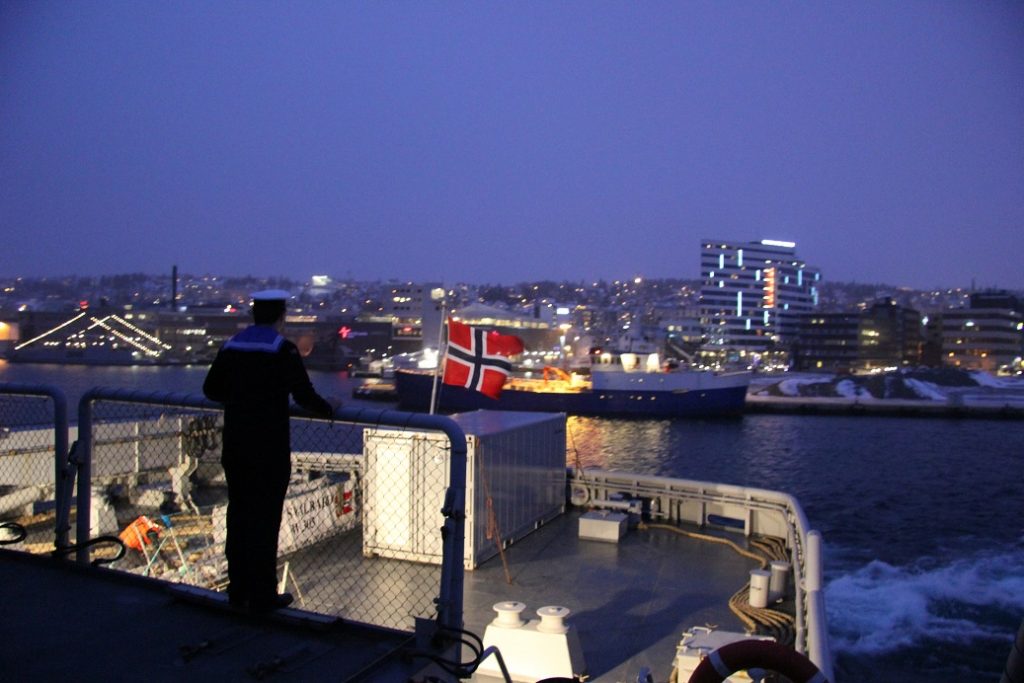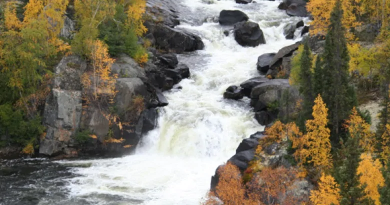Arctic shipping: The myths, the realities & the challenges ahead

TROMSO, Norway – Climate change and the effect of global warming on the North had many predicting a shipping bonanza in Arctic water ways.
Big things were predicted for the Northwest Passage in Canada and the Northern Sea Route in Russia.
But just because something can be done doesn’t mean it will be easy, cost-effective or even safe to do.
Technical challenges of Arctic shipping

There’s a host of technical issues that need to be urgently addressed as increased shipping moves into the North, a group of experts told an Arctic Frontiers session on northern shipping on Thursday.
“Communications, search and rescue and coastal infrastructure are the main areas that need financial support and development of technology,” Victoria Gribkovskaia, a researcher who specializes in Arctic logistics at the Norwegian Marine Technology Research Institute, told Eye on the Arctic.
“Russia particularly has a lot of challenges, especially on the infrastructure side.”
Search & Rescue: How do you get to people and where do you put them?
Different countries have different search and rescue assets. Norway relies on helicopters, while Russia relies on surface vessels for its search and rescue operations.
But no matter what transport you use to reach the emergency, what do you do once you are there?
Especially in the case of a large scale emergency in the High Arctic that involves numerous people, such as a commercial vessel or even a cruise ship in distress, the answer is unclear.
Search and rescue assets can reach a vessel in distress, but then what? Big questions remain as to how people should be extracted from such a situation and where they should, or even could be, put them once rescue vessels have reached them, said Orjan Selvik, a research scientist also with Norwegian Marine Technology Research Institute.
The changing world of icebreakers

Even the role of icebreakers may change as Arctic waterways open up, experts say.
Russia has the largest icebreaker fleet in the world but with the majority of its fleet relics from Soviet times, there’s little indication Russia is planning to shift towards the needs of today’s evolving Arctic.
“A big question for me is: ‘Are Russia’s nuclear powered icebreakers a benefit, a hindrance, or a mix of both,” said Arild Moe, a senior fellow at the Fridtjof Nansen Institute, an independent Norwegian research institute.
“Russia’s attitude has been ‘the more the merrier’ when it comes to icebreakers, but with a much more constrained economy there has to be priorities,” he said. “I will be interested to see if (Russia) developes a more economical approach to the Arctic because investments, I think, will remain a limitation on shipping in that area.”
Russia has actively opened up the Arctic to international traffic in the last decade, charging competitive rates and offering icebreaker services.
But while shipping has increased in relative terms, the numbers are still limited, said Moe. Something that is unlikely to change in the near future, he said.
“How economically attractive is it really to use the Northern Sea Route when you take into account that for many forms of shipping, uncertainty and the unpredictability of time is a major issue,” Moe told Eye on the Arctic at Arctic Frontiers. “Size limitations are also a problem for some container traffic and for part of the season it’s not open to container traffic.”
Way forward
The best way forward to ensure safer and more efficient Arctic shipping is greater international cooperation and information sharing between nations and international researchers, Gribkovskaia said.
And that includes rethinking how Russian activity in the North is portrayed, she said.
News stories announcing Russia reopening old Soviet military bases along the Northern Sea Route often portrayed it as a threat, when in fact, having that kind of infrastructure and search and rescue capability along the route is exactly what the international community needs for safe efficient travel, she said.
“Reinforcement of infrastructure that was in Russia 30 years ago, and the reintroduction of these ports that were in operation during Soviet times, is a good thing both for the local communities and for international traffic travelling the Northern Sea Route,” she said.
“It would be more a concern if they were not doing it.”
Write to Eilís Quinn at eilis.quinn(at)cbc.ca
Related stories from around the North:
Asia: Asia ahead on preparing for polar climate change, says U.S. Arctic rep, Eye on the Arctic
Canada: Canada to collect more data for continental shelf claim, Eye on the Arctic
China: Chinese company mulls more Arctic shipping, Barents Observer
Iceland: Germany, Iceland cooperate on new transpolar port, Barents Observer
Russia: NSR – Twinned development of shipping, oil, Cryopolitics
Sweden: Swedish icebreakers gear up for Arctic role, Radio Sweden
Norway: How satellites are changing what we know, and can do, in the Arctic, Eye on the Arctic
United States: Arctic no shipping rival to Suez: expert, Alaska Public Radio Network



